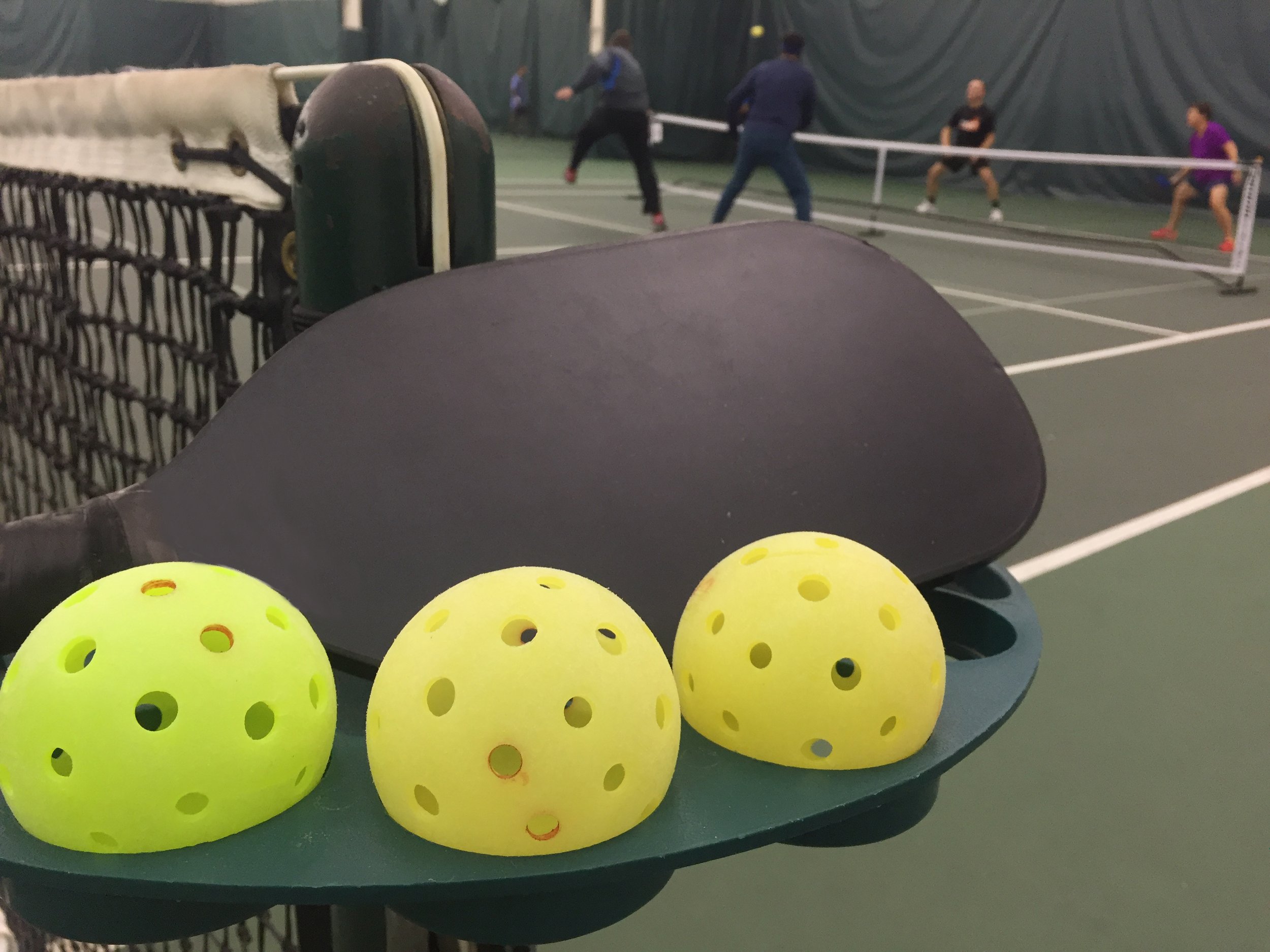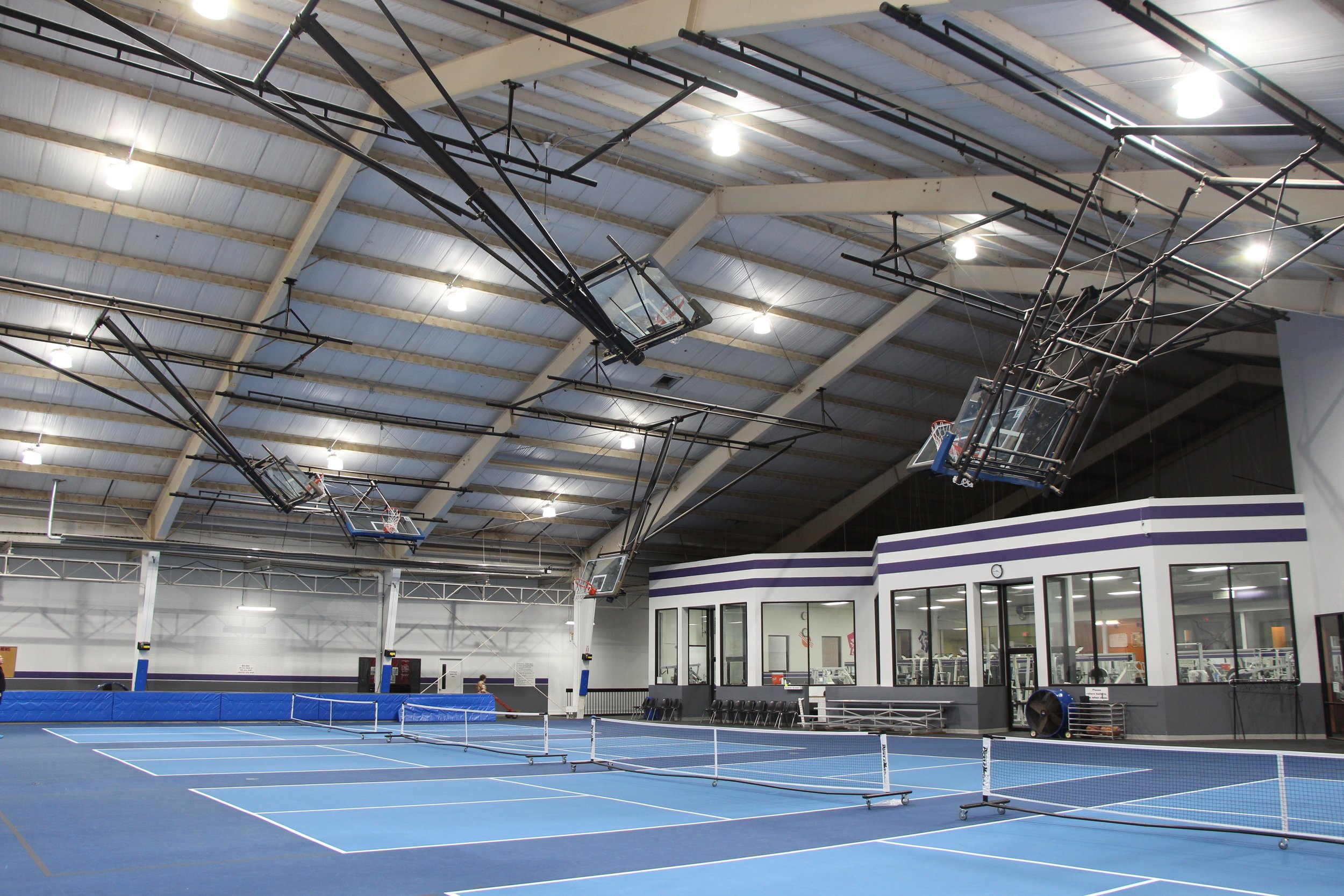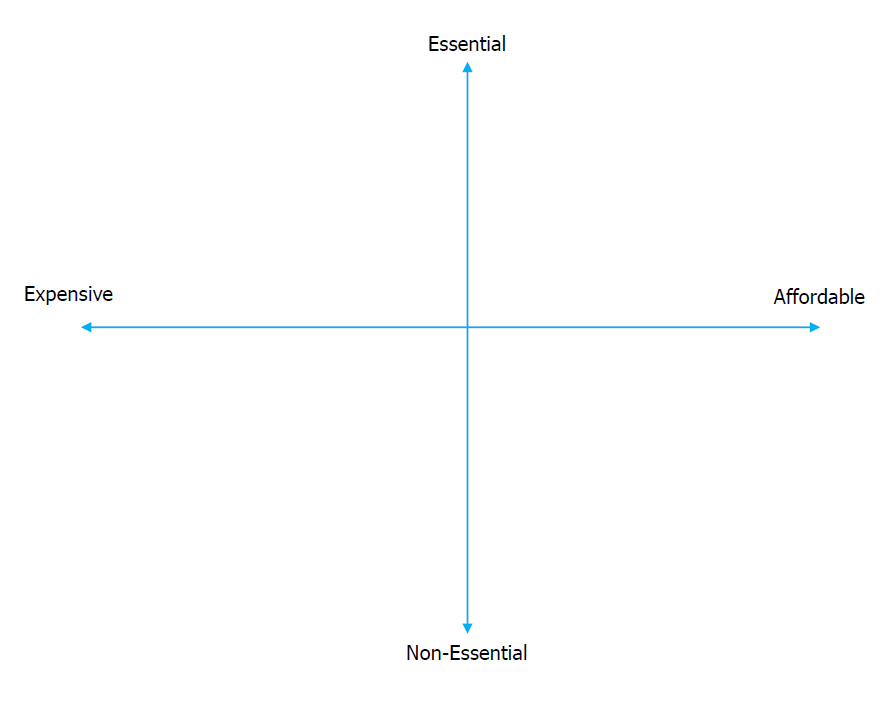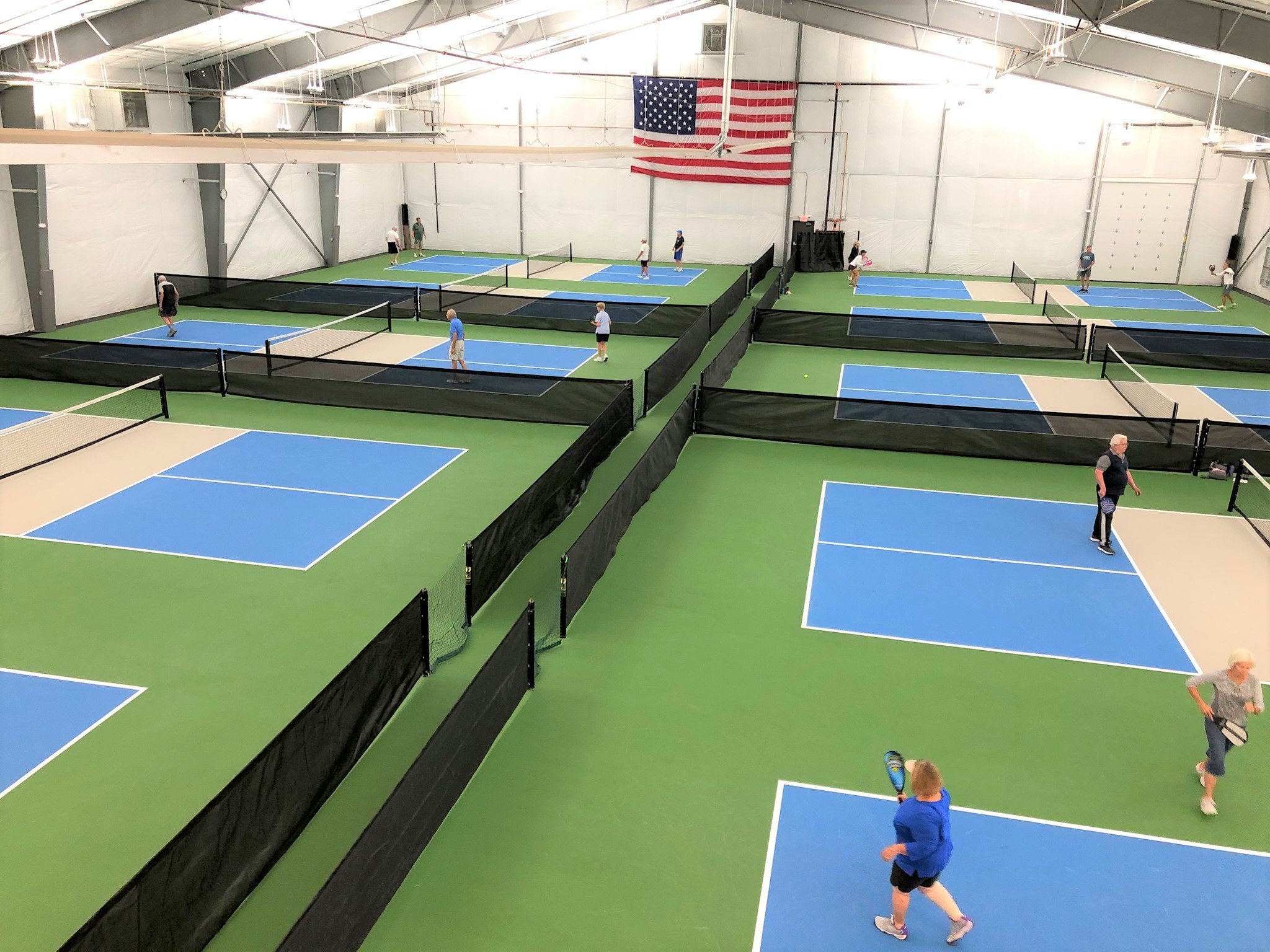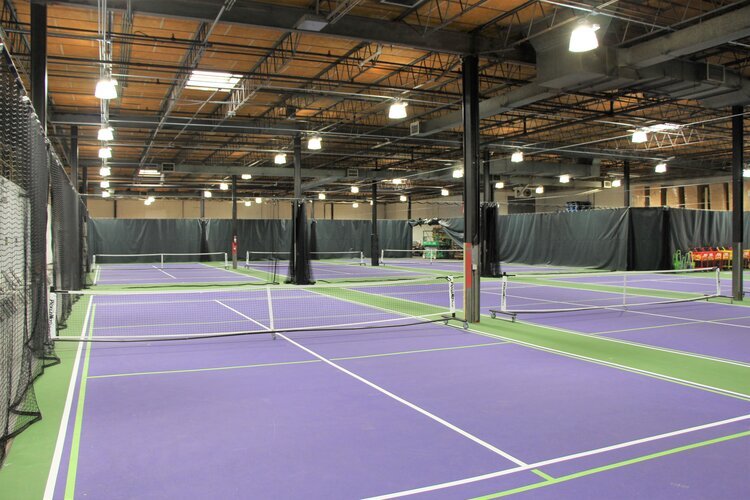Table of contents
What is Pickleball?
LED Pickleball Court Lighting
Our LED pickleball court lighting systems offer superior illumination, delivering a promise of longevity and cost-effectiveness. LEDs use less energy, but their light output is exceptional, and we work hard to push their abilities to suit modern sports facilities. When you work with us to get indoor pickleball court lighting, expect personalized lighting plans and unrivaled quality. At Sports Interiors, we stand by the high quality of our LED lights that ensure exceptional performance and durability.
Our team of experienced professionals provides impeccable installation services, ensuring your lighting system operates at its peak potential. Overall, our advanced LED pickleball court lighting is the perfect combination of quality, efficiency, and reliability. Trust us to provide you with a cutting-edge lighting solution for your pickleball courts.
Pickleball is a paddle sport created for all ages and skill levels. The rules are simple and the game is easy for beginners to learn, but can develop into a quick, fast-paced, competitive game for experienced players. It is a fun sport that combines many elements of tennis, badminton and ping-pong. It can be played both indoors or outdoors on a badminton-sized court and a slightly modified tennis net. Pickleball is played with a paddle and a plastic ball with holes. The format of play can be singles or doubles, with doubles being the most popular. The governing body for Pickleball is the USA Pickleball Association. Visit their website USAPA.org for complete Rules, History and Other Information.
The pickleball court is the same size as a doubles badminton court and measures 20 X 44 feet. In pickleball, the same court is used for both singles and doubles play. The net height is 36 inches at the sidelines and 34 inches in the middle. The court is striped similar to a tennis court with right and left service courts and a 7-foot non-volley zone in front of the net (referred to as the “kitchen”).
When playing pickleball, each player will need a pickleball paddle, which is smaller than a tennis racquet but larger than a ping-pong paddle. Originally, paddles were made only from wood, however today’s paddles have evolved dramatically and are primarily made of lightweight composite materials, including aluminum and graphite. Players will also need a net and a pickleball. The ball itself is unique, with holes through it like a wiffleball and there are different ball models intended for indoor and outdoor play. The ball travels at 1/3 the speed of a tennis ball and is usually white, green or yellow in color. Reach out today to get one step closer to having excellent lights for indoor pickleball courts in your facility.
To summarize:
A fun sport that combines many elements of tennis, badminton and ping-pong.
Played both indoors or outdoors on a badminton-sized court and a slightly modified tennis net.
Played with a paddle and a plastic ball with holes.
Played as doubles or singles.
Can be enjoyed by all ages and skill levels
How to Play Pickleball
Getting Started: Pickleball at Your Facility
Whether you're interested in setting up a simple court at home, repurposing an underused basketball or tennis court or helping to bring the growing sport of pickleball to your community with a new stand-alone space, our team is ready and able to help you through each step of the process.
Converting Your Existing Facility
The easier, and more efficient, of the two options available to club owners and managers who already have an existing structure is to utilize existing tennis and gym space for pickleball play. There are two paths to converting existing courts to pickleball courts: Shared use & Dedicated use.
With shared use, your facility can add pickleball lines to an existing court and players of both sports can use the facility. This may cause some initial confusion, but players quickly get accustomed to the lines. The simplest way to add one pickleball court is to just lower the tennis net to 34" in the center. Lines can be chalked, taped or painted on the court for pickleball. Hold-down arrangements can be used at the ends of the net to bring the net down to the correct height for pickleball (34” in the center, 36” at the sidelines).
Regarding dedicated use, or permanent conversion, the diagram below shows two tennis courts converted to 8 pickleball courts. Angled corners are squared off if necessary. If the tennis court is a standard dimension of 60'x120', that only allows 5 feet between the pickleball sidelines and the fences. That should be considered the minimum dimension. If space and budget allow, add some additional overall width. That will offer the more active players additional room and provide seating on the courts.
Our team of experts can help assist in the conversion of your indoor facility and provide total site assessment and analysis with a visit to your site at no cost. To learn more about how we can help at your facility be sure to contact us by clicking here.
Widgi Creek Pickleball - Bend, OR
Building a New Indoor Pickleball Facility
For businesses, recreation centers and sports complexes looking into building an indoor pickleball facility, it’s crucial that you understand the requirements of the sport, as well as what kind of structure you need to create an enjoyable pickleball experience. Outdoor courts are at the mercy of the elements, which can cause a number of issues, like frequent court maintenance or cancellations during severe weather. However, an indoor pickleball facility provides courts with year-round protection, helping operations save money on routine upkeep and ensuring play can continue through any weather.
Key Considerations you should make before proceeding with planning
Size of facility
How many courts do you want to have at your facility? Do you want a lounge area? Is there going to be social viewing? If so how do you want it positioned in relation to the courts? Will you put a shop in the space? All of these questions, and how you wish the space to operate, should be decided before going into structure and design demands
Cost
Understandably the cost of a new facility varies widely depending on your vision. A net and some court tape to line out the courts can be only a few hundred dollars while a total 8-court facility can be in the hundreds of thousands. Whether its a steel frame, air structure, or fabric structure facility, to the court surface, the lighting/liner, & all other aspects needed for a facility - these are all important aspects to consider with regards to your budget before taking the next step
Noise
Are your planned courts at any risk of disturbing nearby neighbors, business or homeowners associations? Many indoor facilities today are built with openable walls for when the weather is appropriate - it is crucial to understand whether you are at risk of dealing with an unhappy community depending on where the courts will be located
Court Surface & Color
When it comes to laying the surface and the color scheme to be used for your indoor pickleball courts it is vital that you select a group that has experience doing this type of work and has successfully installed pickleball courts at other facilities across the country. Visit our partners page to learn more about some of the biggest names in the US for court surfacing
Do It Yourself vs. Professional Contractor vs. Existing Building
Putting in a basic court in a residential or private property, with an existing and appropriate surface already established (flat and durable), is a relatively easy project that almost anyone can do. With the right tools, you could even put in your own permanent nets and paint a nice court.
If however you are looking at resurfacing or building a new court, it’s worth the investment to have a professional group take on the responsibility of completing the project work. They’ll not only warranty their work in most cases, but they’ll also help ensure that your new facility is up to code for your community.
In many circumstances there are existing facilities (often times unused office and warehouse spaces) that can quickly be converted into the pickleball facility you wish to have - but again our recommendation would be to engage with a third party contractor to assist with the conversion.
Please visit our Partners page to see the many different organizations that can help you with every aspect of your new development and ensure a successful and financially efficient project.
Court Lighting & Liner Systems
There’s only one option - Sports Interiors! Learn more below.
Grand Rapids Racquet & Fitness - Grand Rapids, MI
How Can We Help?
The Sports Interiors Approach to Applying LED Lighting
The goal of any indoor pickleball lighting system is to have the highest possible light levels with as little visual disruption to the players as possible.
In order to achieve this, the best strategy for a facility to take is to look to a company that specializes in, and has extensive experience, working with a variety of indoor structures and providing customized solutions to meet the needs of the end users.
Not all pickleball facilities are the same, and not all expectations at each facility will be the same. It is important for you as a key stakeholder to decide exactly what your expectations are of a new lighting system and what you want to achieve with the new system.
Key Factors to Consider for a New LED Lighting System
Light levels and even distribution across the playing area
Ability to control light levels (dimming system)
Ability to turn on and off all court lighting at the same time
Ability to turn on and off courts individually if needed
Energy and maintenance savings opportunity for new lighting system
Rebate opportunities for the new lighting system
Pickleball courts standards require illumination that delivers an average of 30 foot candles (fc), and a max/min ratio of 2.0 or less. Mounting light fixtures about 20 feet above the courts and in a manner that ensure even distribution across the playing area is critical. This enables pickleball players to see the ball when it goes up into a high arc. Mounting the fixtures too low to the ground would cause the ball to disappear when it goes above the lights and reappear someplace else as it returns to the court.
Sports Interiors has worked with a vast array of pickleball facilities where some of those required a direct lighting application due to the nature of the ceiling while with others we’ve applied our LED System indirectly along with our reflective Liner System. Ideally, an indirect lighting application, when applied correctly, can eliminate any issues with possible glare that a direct lighting application presents.
The Sports Interiors LED Light Fixture
The Cree KBL High Bay Fixture is meant to replace traditional fluorescent or metal halide high bays. The KBL Fixture is the ideal replacement for Metal Halide or Fluorescent fixtures. This LED fixture is able to produce 30,000 lumens with a 5000K color temperature while only using 189 watts. The KBL has an LED rate life of 100,000 hours making it reliable to mount on ceilings suspended or pendant mounted in locations like tennis facilities, athletic clubs, warehouses, retail spaces, gymnasiums and many more commercial applications.
Light Fixture Facts
0-10V dimmable LED high bay fixture
LED rate life 100,000 hours
Operate well within temperatures of -40°C - 40°C
Suitable to mount in damp locations
This fixture may be mounted with a j-box, pendant, hook, cord and plug
5000K color temperature provides a cool white light color
Color rendering index CRI 80
Efficacy rating 150 lm/W
What is a Liner System?
You may be asking yourself “what is a liner system?” and whether you have ever seen one at an indoor athletic facility. Simply put, a liner system is a customized fabric designed to be installed on the ceiling and walls of athletic facilities and metal structure buildings to both improve the aesthetics of the space by hiding the ‘skeleton’ of the building while simultaneously increasing the light levels and improving the playing experience for your players and members. It has exceptional durability, needs no maintenance or follow up treatment, absorbs noise made during active use and provides energy saving opportunities through the additional installation of insulation.
Why should you consider a Liner System for your Indoor Pickleball Courts?
Have you ever thought about the different elements of an indoor pickleball court and how to create the perfect playing experience for your facility? The type and level of lighting probably comes to mind first. Second, the playing surface of the court is taken into consideration. Companies such as Har-Tru offer options in the latest hard-court surfaces being used at the professional level. Next, there needs to be proper spacing between the courts and behind each baseline. However, how often have you thought about the ceiling of your indoor tennis court area? Yes, your ceiling is a critical component of the playing experience and a Reflective Ceiling Liner can improve pickleball playing in more than one way.
Facility Case Studies
(Click on the Images Below to Access Case Studies)
Things to Remember
The goal of any indoor pickleball lighting system should be to have the highest possible light levels with as little visual disruption to the players as possible. Not all pickleball facilities are the same, and not all expectations at each facility will be the same.
Light levels are typically recorded in foot candles and Sports Interiors can assist in either completing a lighting analysis at your facility or guiding you through how best to record your existing light levels.
Whether you decide to build a new indoor facility or utilize your existing indoor tennis courts with additional lines for pickleball play - the indoor playing experience and overall visual performance of your facility is of the utmost importance. The 4 key areas of investment need to be in the correct Lighting, Liner System, Court Surface, and the Correct Equipment. We can help with all these pieces to provide you with the very best indoor conditions.
We can offer you a customized & tailored financial package as an alternative to writing one check
Learn more about the benefits of our Liner System when paired with our LED Lighting system


